Not all types of malware damage your files, steal personal info, or try to cause some other type of direct harm. Altrustix is a prime example of a malware piece that doesn’t damage anything, at least not directly, yet it’s still something you definitely don’t want in your system.
The Altrustix virus belongs to a large and widespread family of Trojan Horse cryptominers. These are rogue programs that get installed stealthily in the system and then run cryptomining processes that drain your system’s resources for the benefit of the malware’s creators. Altrustix and other Trojan miners like it, including Altrousik and the Altruistic virus, can use up upward of 90% of your machine’s CPU and Memory to generate crypto for the criminals behind them. Naturally, this makes the computer nearly unusable and potentially causes its components to age more rapidly.

Trojans like this one will often come disguised as legitimate programs or by being bundled with other software, such as console game emulators or mods for Roblox, Minecraft, and other popular games. That’s why users will often have no idea that they have a Trojan miner in their system until the machine starts experiencing slow-downs due to the malware hogging its resources.
In case you are in a similar situation, removing this malware is the obvious response and the way you can do this is shown below.
Altrustix Removal Tutorial
Trojan miners like Altrustix try really hard to present themselves as legitimate apps, which helps them stay unnoticed, but also, potentially may help you get rid of it more easily. Therefore, I suggest you begin your removal attempts by performing the following quick steps, as they may sometimes be all that is needed. And if they don’t work in your case, you can always move on to the advanced solutions I’ll show next.
- First, head over to your Downloads folder (you’ll find it under This PC > Downloads). Malware like Altrustix often sneaks onto your system as an installer or compressed file.
- Look for anything suspicious, especially files with names you don’t remember downloading. If you see something sketchy, delete it immediately.
- Next, go into your Settings by clicking the Start button and selecting Apps. Sort your installed programs by installation date – this is a great way to spot anything new that appeared on your system without your knowledge.
- If a program looks unfamiliar or out of place, uninstall it. Follow the on-screen prompts to remove it completely.
- Now navigate to
C:\Users\YourUsername\AppData\Local\Programsand look for any folders related to Altrustix. - If you find one, delete it. Then, restart your computer to make sure any changes take effect.
If the malware is still hanging around after these steps, don’t worry – this was just the warm-up. Now, we dig deeper.
SUMMARY:
Before You Begin: Something to Keep in Mind
The advanced guide you’ll find below includes some steps that inexperienced users may find challenging. In case you don’t think you can perform everything on your own, consider the alternative of using the professional SpyHunter 5 anti-malware tool. It provides a safer and faster way to remove Altrustix and it also ensures your system stays protected against other threats in the future.
How to Remove the Altrustix Virus
While performing the next steps, you’ll need to find and delete all files that the Altrustix virus has created in your system. However, some of those files might be hidden and/or blocked. For this reason, you must first make sure that all hidden files in your system are visible and that you can delete the ones that may be blocked by a malware process:
To reveal the hidden files and folders, open Folder Options (just search for it in the Start menu), click the View tab, and check Show hidden files, folders, and drives. Hit Apply and OK. Now, nothing can hide from you.
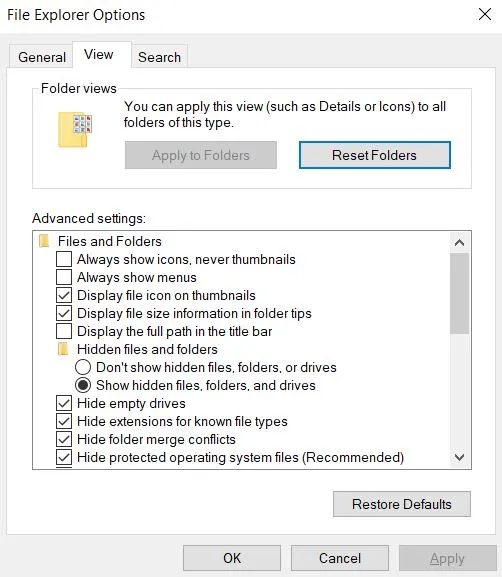
Next, download LockHunter and install it. The tool is totally free and it can unlock and delete stubborn files that refuse to go quietly. Some malware programs make themselves undeletable, but LockHunter can force them out. Install it now – you’ll likely need it in the next steps.
Video walkthrough for this step:
With these preparations done, it’s time to shut down this Trojan miner’s operations for good.
Get Rid of Altrustix Service Background Processes
The Altrustix service process or processes are the main issue with this malware. They are what’s responsible for draining your system’s resources, so you should target them first by going to the Task Manager.
- Note: Altrustix service is only one of the names used by this malware, so look out for any weird names aside from Altrustix. Names like Altrousik, Altrsik, Altruistics, and other similar ones are also linked to this Trojan, so keep your eyes peeled and use your own judgment to determine if a particular process might be linked to the Trojan miner.
To stop this malware in its tracks, open Task Manager (Ctrl + Shift + Esc).
If Task Manager opens in compact mode, click More Details to see the full list of active processes. Sort by CPU or Memory usage, then look for anything unusual. Again, you might see Altrustix service, but the rogue processes might also be listed under a different name – be vigilant.
Found something suspicious? Right-click it and select “Open File Location.” Then delete everything in that folder. If they refuse to go, use LockHunter: right-click the file, choose What’s Locking It?, then force delete it.
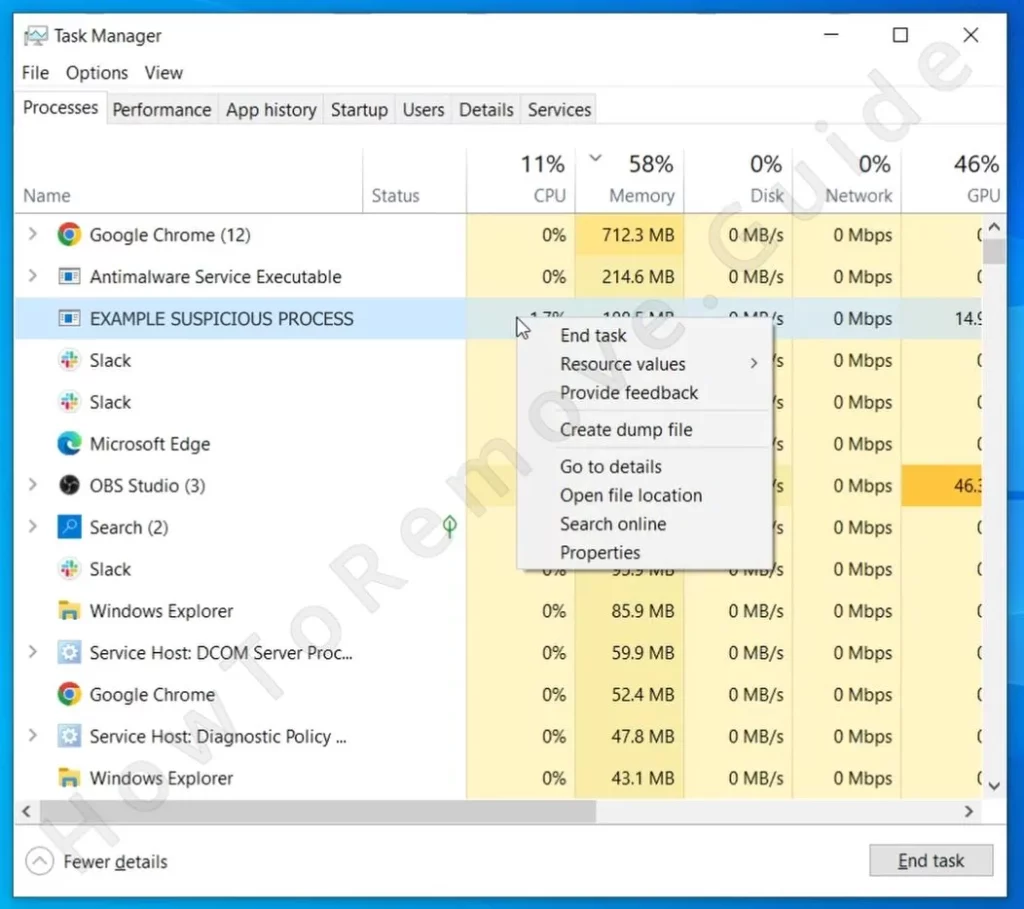
Once the folder is gone, return to Task Manager, select the process, and click End Task to kill it.
Repeat the same steps for any other suspicious processes that may still be running in the Task Manager. This ensures the Trojan isn’t running while you work on fully removing it.
Video walkthrough for this step:
How to Delete Persistent Files with Lock Hunter

Delete Altrustix Virus Files
Multiple directories in your system likely contain Altrustix virus files, so even though you deleted the file location folders of the rogue processes, there are still other locations you need to check. Below, I’ve shown the ones where you are most likely to encounter more rogue data.
To wipe it out completely, check these locations:
- Startup Folders
C:\ProgramData\Microsoft\Windows\Start Menu\Programs\StartupC:\Users\YourUsername\AppData\Roaming\Microsoft\Windows\Start Menu\Programs\Startup
Delete everything except desktop.ini (it’s harmless).
- Program Files Directories
C:\Program FilesC:\Program Files (x86)
If you spot a folder related to Altrustix, delete it.
- AppData Directories
C:\Users\YourUsername\AppData\Local\ProgramsC:\Users\YourUsername\AppData\Roaming\Microsoft\Windows\Start Menu\Programs
Any suspicious files here? Get rid of them.
- Temporary Files
Altrustix may have dumped extra files into your Temp folder. OpenC:\Users\YourUsername\AppData\Local\Temp, select everything inside, and delete it all. It’s safe to do so.
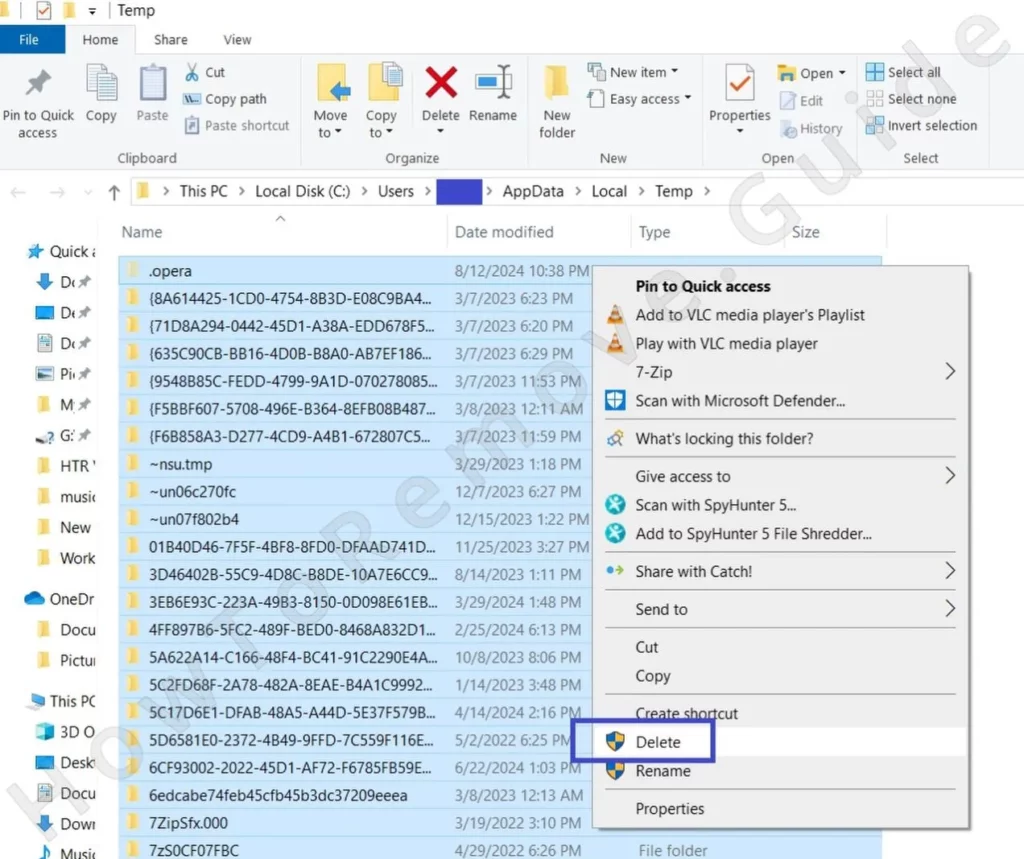
After clearing out these directories, empty your Recycle Bin to make sure nothing is left behind.
Get Rid of Altrustix Scheduled Tasks
Do not forget to check your Task Scheduler for Altrustix tasks. This is an often overlooked part of the system that must always be explored when trying to manually remove malware. The scheduled tasks there are set to perform a particular action when specific requirements are met and Trojans and other malware often create such tasks to launch themselves automatically or even reinstall themselves after getting removed.
You must search for the Task Scheduler in the Start Menu and open it from there.
Expand the Task Scheduler Library and look through the tasks. Check the Actions tab to see what each task is running. If you find one linked to a suspicious executable, take note of its file path, delete the task, and then go to that file’s location to remove it.
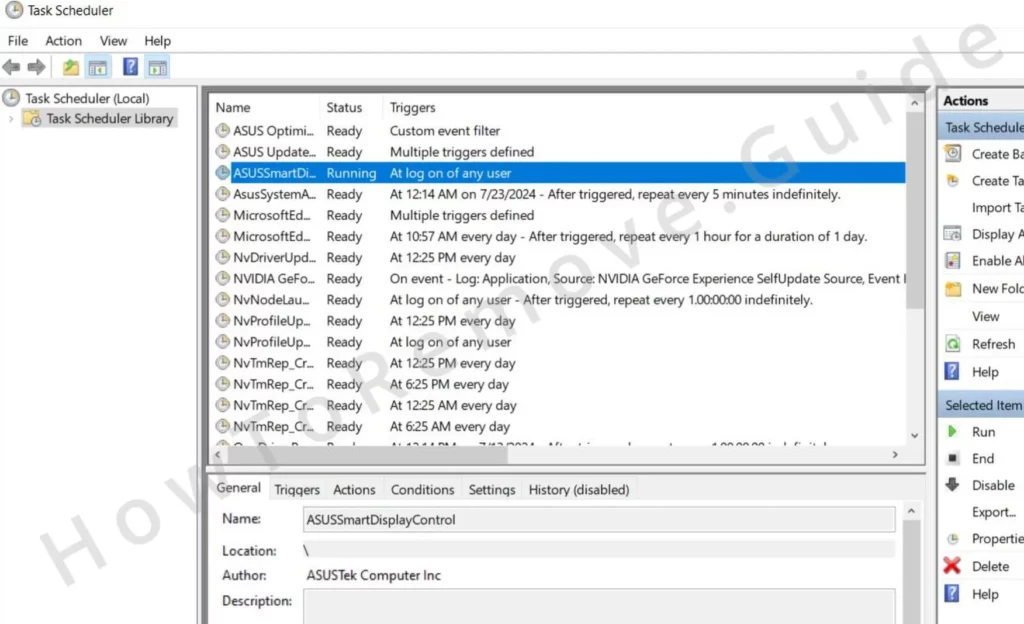
At this point, Altrustix should be severely crippled, if not completely gone. But there’s one last place it could be hiding…
Video walkthrough for this step:
Uninstall the Altrustix Malware App Through the Windows Registry
Another very important step is to perform a Registry cleanup. The Altrustix malware app has almost certainly created some entries there and removing them is necessary to fully get rid of the malware.
- Note that you must only delete Registry items you are sure are linked to Altrustix. If you delete the wrong thing, this can cause all sorts of issues in the system.
If you don’t think you can handle this yourself, consider letting SpyHunter 5 handle it. If you are confident you’ve got this, here’s what to do:
Press Win + R, type regedit, and hit Enter to open the Registry Editor.
Press Ctrl + F and search for “Altrustix”. Delete every entry you find. Then also run searches for Altrousik, Altrsik, and Altruistics and delete relevant entries. Always search again for the same query after you delete something to confirm there’s nothing more left.
Now manually check these registry keys for suspicious entries:
HKCU\Software\Microsoft\Windows\CurrentVersion\RunHKCU\Software\Microsoft\Windows\CurrentVersion\RunOnceHKLM\Software\Microsoft\Windows\CurrentVersion\RunHKLM\Software\Microsoft\Windows\CurrentVersion\RunOnceHKLM\Software\Microsoft\Windows\CurrentVersion\Policies\Explorer\RunHKCU\Software\Microsoft\Windows\CurrentVersion\Policies\Explorer\RunHKEY_LOCAL_MACHINE\Software\Microsoft\Windows\CurrentVersion\RunServicesHKEY_LOCAL_MACHINE\Software\Microsoft\Windows\CurrentVersion\RunServicesOnceHKEY_LOCAL_MACHINE\Software\Microsoft\Windows\CurrentVersion\RunOnce\SetupHKEY_LOCAL_MACHINE\SYSTEM\CurrentControlSet\services
Click each key, check its contents on the right, and if you see any entries linked to Altrustix, delete them. Here, you must not delete the keys on the left, only suspicious values on the right.
Once you’re done, restart your computer.
Video walkthrough for this step:
Finalizing Altrustix Virus the Removal Process
To ensure no residual traces of Altrustix linger, perform one last check using the Command Prompt:
Open the Start Menu, type cmd, and run it as an administrator.
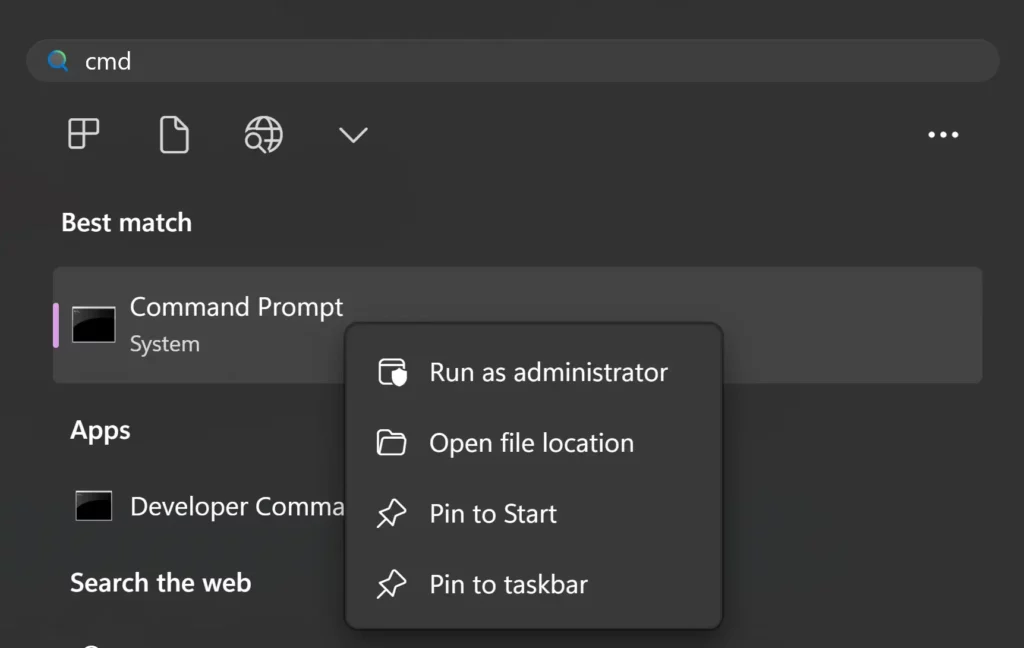
Type the following command and press Enter:
- sc delete altrustix
Then also run these two other commands:
- sc.exe stop “altrustixService”
- sc.exe delete “altrustixService”
If successful, you’ll see a confirmation message indicating the service has been removed.
Now, restart your computer to apply the changes. After rebooting, monitor your system for unusual behavior. If you experience lingering issues, consider running a malware scan with a trusted security tool like SpyHunter 5 for additional verification.
What Is the Altrustix App?
The Altrustix app is actually a sneaky cryptocurrency miner that hijacks your system’s CPU and RAM to secretly mine Monero, Zcash, and other digital currencies. It doesn’t ask for permission, doesn’t show itself, and definitely doesn’t care if it fries your hardware in the process. The longer it runs, the worse it gets – overheating, sluggish performance, and even permanent hardware damage aren’t off the table. To avoid detection, the malware throttles its CPU usage just enough to stay under the radar while still making money for its creators.
The worst part? You probably installed it yourself without realizing it. It spreads through Roblox shader tools, Minecraft mods, and third-party console emulators, slipping into downloads from unverified sources. Since most people rush through installation prompts, Altrustix sneaks in, buries itself in system files, and ensures it launches every time you turn on your device. Once it’s in, it’s not leaving without a fight.
Getting rid of this Trojan miner can be a hassle, but avoiding it is much easier. Stay away from sketchy downloads, actually read installation prompts, and deselect anything suspicious before clicking “Next.” Most importantly, get a solid antivirus – one that can catch crypto miners before they start eating up your resources. If this malware is on your system, it’s burning through electricity, slowing everything down, and grinding your hardware into the ground – all while making someone else rich.
Tips to Avoid Altrustix in the Future
Avoiding Altrustix isn’t just about common sense – you need to go a step further. Sure, you already know not to click shady links, download pirated software, or open sketchy email attachments, but there’s more you can do.
First, disable automatic downloads so files can’t sneak onto your system without your knowledge. In most browsers, head to Settings > Downloads and turn on the option that asks where to save files before downloading. This way, nothing gets in without your approval.
Next, turn on your browser’s enhanced security features. If you’re using Chrome, go to Privacy and Security > Security and enable Enhanced Protection and Always use secure connections. Other browsers have similar options – find them and activate them.
And if you don’t already have one, get an ad-blocker. It’s not just about skipping annoying ads – it blocks malicious pop-ups, prevents sketchy redirects, and warns you about dangerous sites. Many malware infections start with deceptive ads, so this simple step can make a huge difference.
